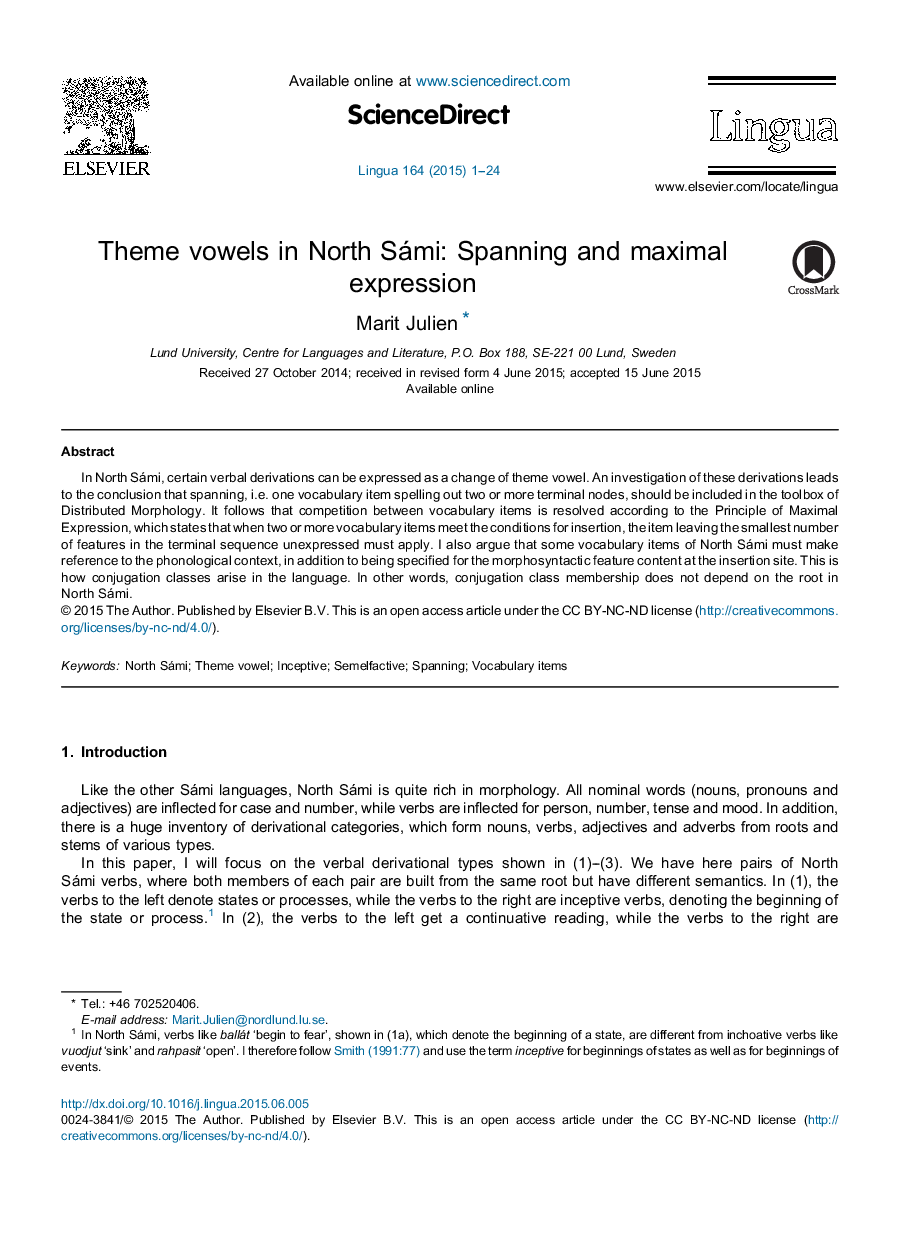| Article ID | Journal | Published Year | Pages | File Type |
|---|---|---|---|---|
| 10461103 | Lingua | 2015 | 24 Pages |
Abstract
In North Sámi, certain verbal derivations can be expressed as a change of theme vowel. An investigation of these derivations leads to the conclusion that spanning, i.e. one vocabulary item spelling out two or more terminal nodes, should be included in the toolbox of Distributed Morphology. It follows that competition between vocabulary items is resolved according to the Principle of Maximal Expression, which states that when two or more vocabulary items meet the conditions for insertion, the item leaving the smallest number of features in the terminal sequence unexpressed must apply. I also argue that some vocabulary items of North Sámi must make reference to the phonological context, in addition to being specified for the morphosyntactic feature content at the insertion site. This is how conjugation classes arise in the language. In other words, conjugation class membership does not depend on the root in North Sámi.
Keywords
Related Topics
Social Sciences and Humanities
Arts and Humanities
Language and Linguistics
Authors
Marit Julien,
